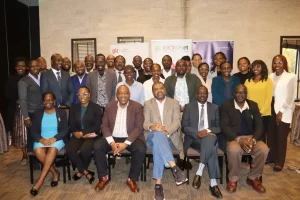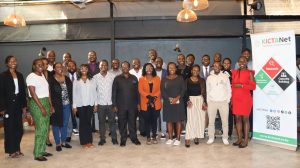The World Assistive Technology Day reminds me of a heated debate we had Last week with the deaf community. This was during one of the sessions of the weeklong training workshop organised by KICTANet in collaboration with the Communications Authority (CA). The theme for the workshop was “The Internet and Disability: A Focus on Digital Inclusion”.
The question question that triggered the debate was what role Assistive technology (AT) could play in enabling the deaf to drive cars. Although this was not an internet-related question it escalated into laws governing car ownership, driving and the National Transport and Safety Authority’s (NTSA) mandate in regulating issuance of licenses.
Previously, NTSA issued driving licenses to people who are deaf and hard of hearing, but it changed tune with the introduction of the new generation smart driving license. This included the introduction of stringent rules for migrating from the old license to the new one.
To acquire a driving license, the deaf in Kenya are required to undergo the Brainstem Evoked Response Audiometry (BERA) test, which costs KSh. 6,750 and is only available at the Kenyatta National Hospital. Additionally, they need a positive recommendation from a doctor, which many applicants are denied, automatically disqualifying them from being issued a driving license.
The rules are blurred on whether deaf individuals should be licensed to drive, leaving them reliant on BERA tests and at the mercy of doctor’s recommendations. Past reports show that some of the deaf have obtained driving licenses, with a few even driving passenger vehicles. However, there is currently uncertainty about the legality of deaf individuals driving. A quick search on the NTSA website doesn’t yield useful information on this issue.
One of the key reasons that the KICTANet Digital Accessibility for Persons with Disabilities – ICT Access and Equality program advocates for digital accessibility and inclusion is to ensure equality in accessing public services, ICTs and other digital products and services, and a driving license is no exception. This was also the motive behind the development of the scorecard on Accessibility of Government Websites to Persons with Disabilities. The issue of driving licenses for the deaf is a transport and safety issue, rather than an ICT issue, but we can’t escape it since all these stem from access to services.
Presumably, the main reason why the deaf have difficulty accessing a driving license is safety – their safety as drivers and that of other road users. However, there is no data to support this.
In the discussion, some participants agreed with the NTSA’s restrictions citing safety concerns, but others saw it as a form of discrimination that hinders inclusion and participation in socio-economic activities.
The absence of clear guidelines for adapting vehicles for the deaf and the lack of relevant data to address safety concerns add to the challenge of obtaining driving licenses for the deaf. This situation also highlights discrimination within the disability community.
Although there is a lack of concrete data to support these safety concerns, members of the deaf community believe that deaf and hard-of-hearing drivers are more alert and less likely to cause road accidents.
Looking towards the future, technological advancements such as Artificial Intelligence (AI) and the Internet of Things (IoT) can improve the purported safety concerns and experience of deaf drivers. Leveraging technologies like haptic responses, hearing aids, sound recognition, and audio captions can create more inclusive spaces for the deaf and hard of hearing.
Assistive technology holds the key to achieving equality and meeting the recommendations on accessibility and inclusion outlined in the CRPD.
Happy World Assistive Technology Day!
#WorldATDay
![]()




